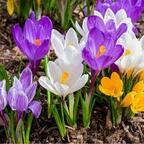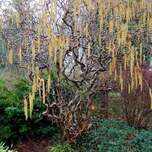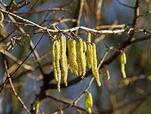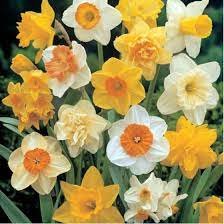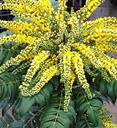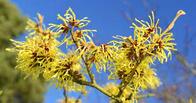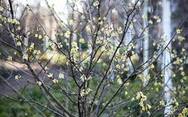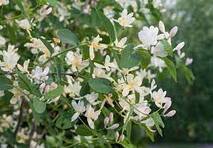... by Amanda Hopwood
 winter aconite
winter aconite
It is January and the sun pokes out from behind a scuttling cloud. The air is still cold and despite knowing that the worst of the winter may yet be to come, I can’t help feeling a little bit excited about the forthcoming spring. The days are drawing out slowly and the sun, unhindered by summer haze seems to have a special vibrancy. In a sheltered corner of the garden by the hedge, the first snowdrops are appearing, soon to be joined by the pretty yellow star shaped winter aconite flowers.
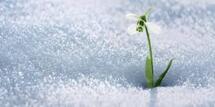 Snowdrop
Snowdrop
The flowers of winter and early spring may not be as big and showy as those of mid- summer but they are such a welcome sight, reminding us that spring is not far away. Whilst there are few pollinating insects around at this time of year, they are invaluable to the few that emerge early. Butterflies, moths and bees emerging from hibernation will all be in need of a food source and with increasingly unpredictable weather some may be on the wing as early as February.
|
Many of the early flowers have evolved to live near deciduous trees or shrubs. They do their flowering and growing early in the season before the leaves come out on the trees and cast shade. Planting bulbs or corms and early herbaceous plants in a shrub border that looks a bit dull during the winter will bring it to life earlier in the season. Suitable plants are snowdrops (Galanthus nivalis) and Winter aconite (Eranthis hyemalis) Crocus are a particularly good source of pollen provided that they open to reveal it. Choose Crocus tommasinianus and its cultivars. Unfortunately most Narcissi or Daffodils are not particularly popular with bees, however the now rare wild daffodil (Narcissus pseudonarcissus) is a nice addition and probably more popular with British pollinators. However, who cannot be cheered by the sight of early narcissi and hazel catkins. Planting a few ’Rijnveld’s Early sensation’ or ‘February Gold’ should not disappoint. The corkscrew hazel (Corylus avellana ‘Contorta’) is not the prettiest plant when in leaf but in early spring its contorted stems are covered with powdery yellow catkins and are a delight. It is great for bees, and other pollinating insects. It is also a good caterpillar food.
|

The Lenten Rose or Hellebore (Helleborus orientalis) are also a good choice for planting around shrubs or in less sunny parts of the winter garden and the bees are attracted to their pollen. If grown from seed they are very variable in colour ranging from pale green and cream to deep wine. Many have attractive speckling.
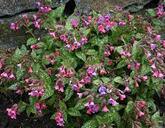
Other early spring flowers to consider are Lung wort ( Pulmonaria sp.) which also has attractive spotty leaves. It is often in flower when the first bumble bees emerge and is a favourite with them. Again it prefers light shade and moist soil. And one of the most welcome sights is that of early primroses peeping through. Winter flowering heathers (Erica carnea) also provide winter forage as they are rich in nectar.
|
There are several shrubs that flower in winter such as shrubby honeysuckle (Lonicera fragrantissima), but although its scent is wonderful, the flowers are small and not very showy. However it is enjoyed by insects. Wintersweet (Chimonanthus praecox) is also very fragrant but its pale yellow flowers are much more abundant than the honeysuckle. One of the more colourful winter shrubs is Witch Hazel (Hammamelis x intermedia ‘Pallida’) is the most popular variety with pale yellow flowers. Unfortunately, they will not grow on shallow limestone soils. Mahonias are a common garden plant and again these can be sweetly scented but have the advantage of large sprays of yellow flowers and evergreen foliage. If you are looking for a large shrub or small tree, you could try the Cornelian cherry (Cornus mas). This has small fluffy yellow clusters of flowers in early spring which are then followed by edible cherries.
|
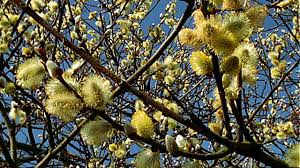
If you are trying to create a garden for wildlife, then some form of pussy willow will be highly prized by early bumble bees. The flowers are coated in masses of yellow pollen which is a valuable source of protein that the queen bees will need in order to produce eggs. You will have to be careful about the variety that you choose though as some are quite large. The common goat willow (Salix caprea) can grow quite large, however, the weeping form Salix caprea ‘Kilmarnock’ is a dwarf form. Salix hastata ‘Wehrhahnii’ is another small willow but has upright stems.
If you can find space for some early flowers, even just a tub outside your door, they can’t fail to brighten even the dullest of winter days. And remember, now is a good time to plant trees, shrubs and hedging providing the ground is not frozen so you can think ahead to the summer to come.
